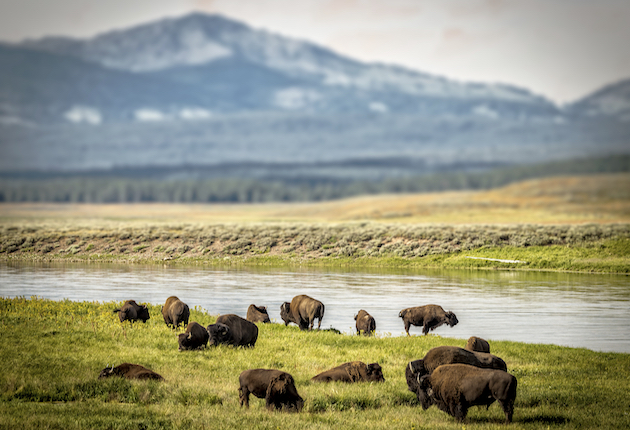A deadly parasite and the resulting fish kill have halted fishing on parts of the Yellowstone River. Montana Fish, Wildlife and Parks has implemented an immediate closure of some 200 miles of the river to prevent the spread of Proliferative Kidney Disease and its microscopic carrier, with the affected stretches likely to remain closed the rest of the season.
The news came August 19 after 2,000 mountain whitefish were found floating, rotting, and stinking in the Yellowstone. All water-based recreational activities, including fishing, wading, floating, and boating, are prohibited from the national park’s northern boundary at Gardiner, Montana, to the Highway 212 bridge in Laurel, southwest of Billings.
The effects, both to the local economies and the environment, are obvious.
“The aroma of rotting fish tells you what we’re dealing with,” Travis Horton, a regional fisheries biologist in Montana, told the New York Times.
The disease has hit whitefish particularly hard, but trout are also at risk.
Much of Montana’s $6 million annual income from outdoor recreational pursuits comes from the Yellowstone and the anglers it attracts. Roughly 64,000 Montanans are employed by the state’s outdoor recreation industry, and with this season all but canceled, many guides and outfitters are struggling to overcome the setback.
Montana FWP is taking steps to help contain the disease. Boaters are urged to rinse their vessels before transporting them to other bodies of water—two decontamination sites have been established along I-90—and biologists are taking water samples for analysis. In the end, though, experts believe it will just require a change in the environment itself. With summer heat and near-record low flows comes the loss of cold water for trout and whitefish; the warm water then acts as a catalyst to further the spread of PKC.
“A threat to the health of Montana’s fish populations is a threat to Montana’s entire outdoor economy and the tens of thousands of jobs it sustains,” said Gov. Steve Bullock. “We must be guided by science. Our state cannot afford this infectious disease to spread to other streams and rivers, and it’s my responsibility to do everything we can to stop this threat in its tracks and protect Montana jobs and livelihoods.”
PKD is known to occur in the U.S., Canada, and Europe and has been found in Montana before. The deadly disease has been documented twice in the state within the last 20 years, albeit in much more isolated areas than the current catastrophe. Recent outbreaks have also occurred in Idaho, Washington, and Oregon.

